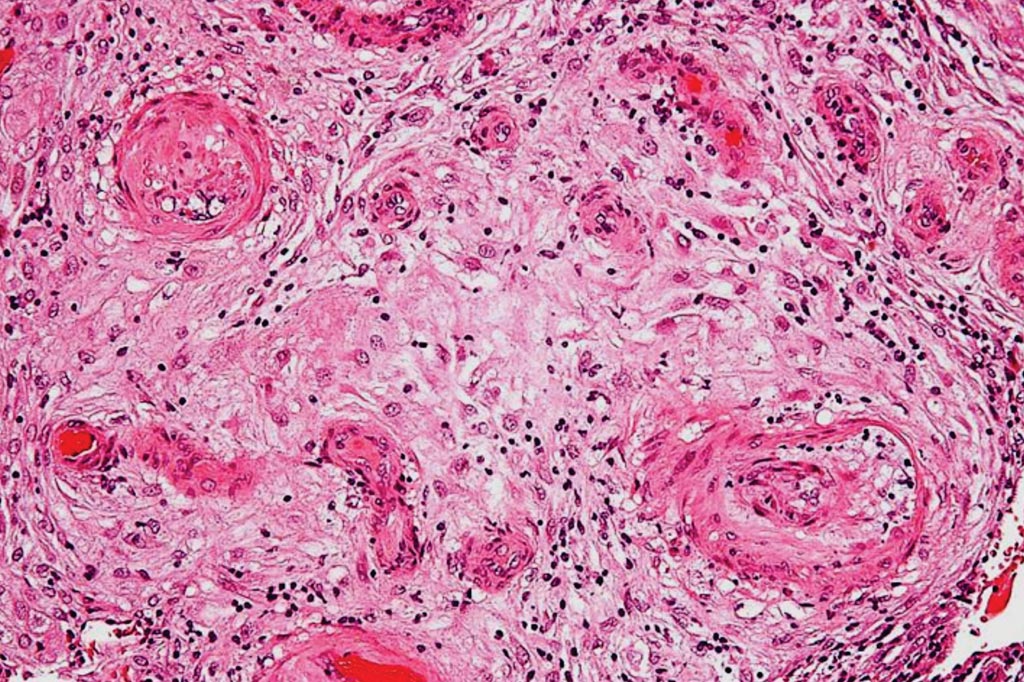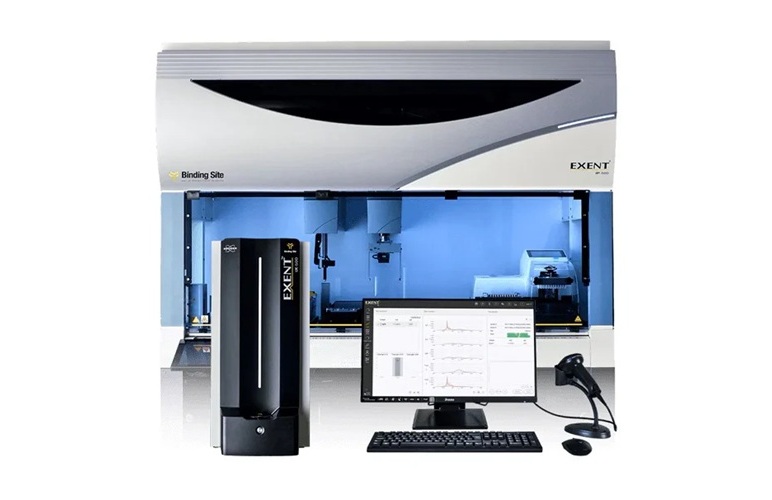Risk of Preeclampsia Linked to Fetal Genes
By LabMedica International staff writers
Posted on 15 Sep 2017
Preeclampsia affects around 3% of births in Norway; worldwide, that number is estimated to be about 5%. For the first time, a relationship has been found between fetal genes and the risk of preeclampsia in the mother.Posted on 15 Sep 2017
In the vast majority of cases, the mother has mild symptoms, typically high blood pressure. Nevertheless, preeclampsia is one of the leading causes of death in both mothers and babies around the time of birth, and sometimes the only way to treat it is to deliver the baby, even prematurely.

Image: A photomicrograph showing hypertrophic decidual vasculopathy, a finding seen in gestational hypertension and pre-eclampsia (Photo courtesy of Nephron).
A large international team of scientists led by those at Norwegian University of Science and Technology (Trondheim, Norway) carried out genome-wide association studies (GWAS) of offspring from preeclamptic pregnancies and discovery of the first genome-wide significant susceptibility locus (rs4769613)) in 4,380 cases and 310,238 controls. This locus is near the FLT1 gene encoding Fms-like tyrosine kinase 1, providing biological support, as a placental isoform of this protein (sFlt-1) is implicated in the pathology of preeclampsia.
The genetic variants identified by the team are associated with the FLT-1 gene, which encodes a protein that in soluble form is known as a biomarker for preeclampsia. The protein contributes to damaging the mother's vascular system so that she develops symptoms such as high blood pressure and an increased amount of protein in the urine. This happens as a result of problems with the placenta, essentially because fetal cells in the placenta produce the protein. The association was strongest in offspring from pregnancies in which preeclampsia developed during late gestation and offspring birth weights exceeded the tenth centile. An additional nearby variant, rs12050029, associated with preeclampsia independently of rs4769613.
Ann-Charlotte Iversen, PhD, a professor and senior author of the study, said, “Our findings are particularly solid for three reasons: we analyzed a large number of individuals, we found several genetic variables that all point to the same gene associated with the risk, and two independent population studies confirmed that this gene is associated with the risk. We have shown here that the risk of disease may be because changes in the gene affect how the protein works and how it affects the mother. This is a fetal gene that gives the mother an increased risk of developing preeclampsia.” The study was originally published online on June 19, 2017, in the journal Nature Genetics.
Related Links:
Norwegian University of Science and Technology














